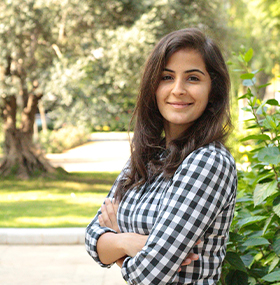Just three years ago, Europe opened its arms wide open for refugees fleeing Ukraine due to the Russian Ukrainian war. Today, it’s turning a blind eye to more than four million Africans starving just across the Mediterranean.
There is this huge contrast that exposes a painful double standard on how the world shows compassion. On paper, and in the cute, crafted statements of humanitarian agencies, showered with the humanitarian principles of neutrality and impartiality, every refugee deserves dignity and help. But in reality, who actually gets support often depends on where they come from, the colour of their skin, and whether the world’s attention is still on their crisis.
If we take a look at the numbers: In 2024, countries donating aid spent around $28 billion to support refugees within their own borders, covering things like housing, healthcare, and schooling during the first year of displacement. While these funds aren’t divided by nationality in reports, it is obvious that most of that money went to Ukrainian refugees. Right now, Europe hosts about 4.4 million Ukrainians under temporary protection which is the largest refugee population there since World War II. This means, on average, each Ukrainian refugee benefits from about $6,200 in aid every year.
READ: UNHCR: 239,000 Sudanese refugees stranded on Chad border
Now if we were to compare that to the situation in Sudan, over 1.2 million Sudanese refugees have fled to Chad, and the World Food Programme (WFP) says it needs $77 million just to provide half-rations for six months. That breaks down to roughly $770 per person per year. Across other neighbouring countries like Egypt, Ethiopia, the Central African Republic, and Libya, funding is so low that WFP warns food aid could stop completely within weeks. WFP also say that they urgently need $200 million to prevent widespread hunger and malnutrition in the region.
This gap is shocking and quite embarrassing: $6,200 per Ukrainian refugee versus only $770 per Sudanese refugee, with some Sudanese refugees facing the possibility of receiving no aid at all in the coming months.
It’s not that Ukrainian refugees don’t deserve help. Of course they do, they absolutely do. The comparison is not undermining the Ukrainian suffering. The question is why Sudanese families, fleeing one of the deadliest and least visible wars on Earth, don’t receive the same outpouring of solidarity. This isn’t about money because $200 million to save millions of lives in Africa is less than what some countries spend on Ukraine aid in a single week, or less than the cost of one fighter jet.
Unfortunately, what this shows is a harsh truth that some lives are seen as more worthy of grief, more visible, more valuable. There’s an unspoken hierarchy in the global response to suffering. Ukrainians flashed policy changes, budget increases, and public support across Europe. On the other side, Sudanese refugees are met with cuts, donor exhaustion, and silence.
One might ask: why the difference? Race plays a role. So does geography as Europe feels closer to Ukraine’s war. But media coverage and political will are highly necessary. Ukraine dominates headlines, summits, and conversations, especially in Western media. Sudan barely makes the news. The war there has dragged on for almost three years, causing over 4 million refugees to flee into seven neighbouring countries and displacing more than 10 million inside Sudan. Also, the UN warns of forthcoming and worsening famine, widespread and brutal atrocities, in addition to increasing gender-based violence. Yet, global attention is fading fast.
READ: Over 2M Syrians return home since December: UN refugee chief
The fallout is real and heartbreaking especially that malnutrition is constantly and exponentially rising among Sudanese refugee children. At the same time, humanitarian workers are forced to scale back or shut down aid programs. Drastically speaking, entire communities could soon be left to survive in some of the harshest conditions on Earth, all because the world’s attention has moved on.
I don’t believe that this is just a war crisis anymore, I believe it’s a crisis of apathy. What happens when the world forgets a war? A very brutal, bloody war? Over four million Sudanese refugees are about to find out.
If we truly believe in humanitarian values, they can’t switch on only when cameras are rolling or when geopolitics favours the cause. Compassion, aid, advocacy, state-building, ending crisis, all must reach the refugees in Africa, in forgotten crises, even when no one is watching.
Sudanese communities need the world’s focus, funding, and urgent action. That $200 million to keep them fed for six months is definitely achievable. What’s missing is a sense of urgency. What’s missing is outrage.
We can’t afford to pick and choose who deserves our empathy. The next time we say, “never again,” let it be a promise kept for all refugees, no matter their passport or skin colour.
OPINION: The Arab Summit’s Gaza plan is a step forward, but the road ahead is long
The views expressed in this article belong to the author and do not necessarily reflect the editorial policy of Middle East Monitor.

![Refugees from war-torn Sudan hold a sit-in seeking support in front of the United Nation High Commissioner for Refugees (UNHCR) offices in Tripoli, on July 15, 2023 [MAHMUD TURKIA/AFP via Getty Images]](https://i0.wp.com/www.middleeastmonitor.com/wp-content/uploads/2025/03/GettyImages-1533649149-scaled-e1741871888552.jpg?fit=920%2C613&ssl=1)







